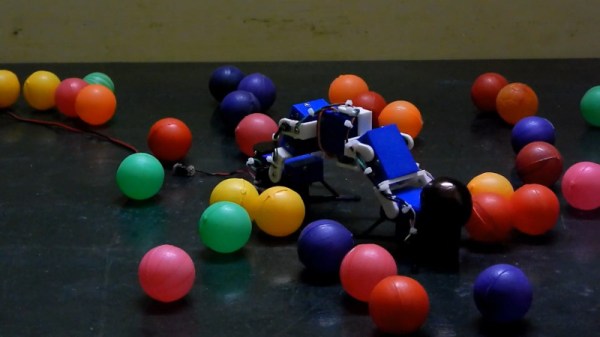When we want to prototype a rover, we’ve developed a tendency to immediately reach for the 3D printer and Arduino or Raspberry Pi. It’s easy to forget the prototyping tool many of us grew up using: LEGO. The [Brick Experiment Channel] has not forgotten, and in the video after the break demonstrates how he used Lego Technic components to prototype an impressive little obstacle climbing robot.
The little Lego rover starts as a simple four-wheeled rover trying to climb on top of a book. Swap in a four-wheel-drive gearbox and grippy tires, and it clears the first obstacle. Add a few books to the stack causes the break-over angle to become an issue, so the rover gets an inverted-V chassis. As the obstacle height increases, batteries are moved around for better weight distribution, but the real improvement comes when an actuating middle joint is added, turning it into a wheeled inchworm. Clearing overhangs suspended beams, and gaps are all just a matter of finding the right technique.
Thanks to Lego’s modularity, all this is possible in an hour or two where a 3D printer and CAD might have stretched it into days. This robot does have the limitation of not being able to turn. Conventional car steering or Mecanum wheels are two options, but how would you do it?
The [Brick Experiment Channel] knows a thing or two about building Lego robots, even for stealing keys. Continue reading “Obstacle Climbing Rover Built With The Power Of Lego”













